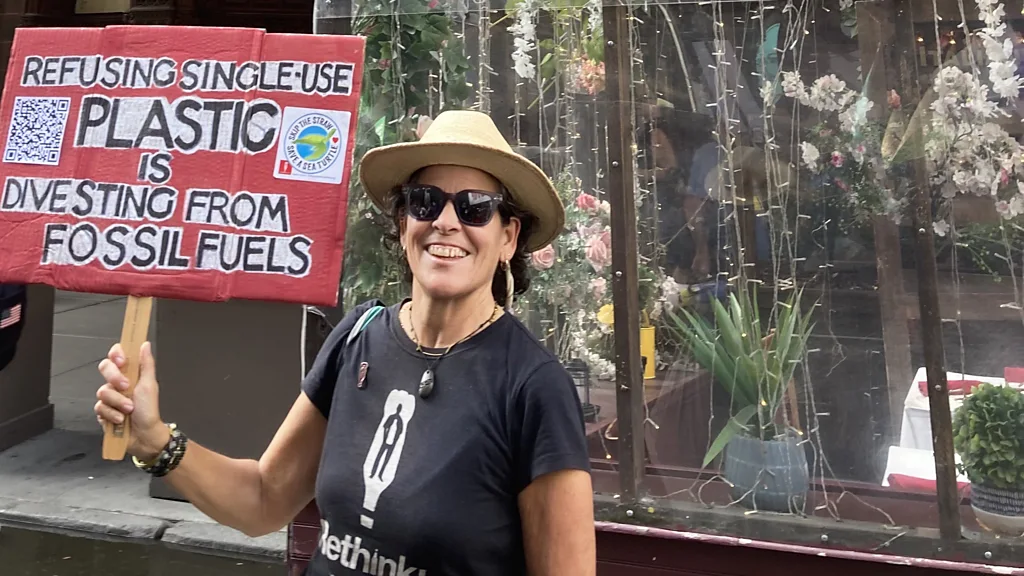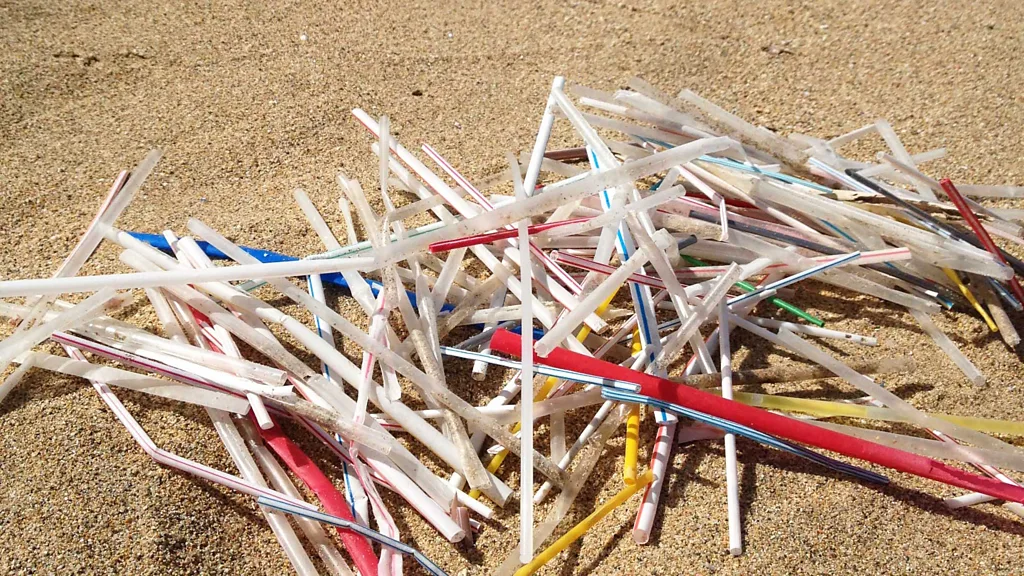[social_warfare]
Rethinking Plastic: The Last Straw That Broke the Turtle’s Back
In 2015, a heart-wrenching video surfaced that would soon ripple across the globe, stirring an unprecedented environmental awakening. It featured a distressed olive ridley turtle, with a plastic straw lodged deeply in its nostril.
This video, captured by marine biologist Christine Figgener during a research trip off the Pacific Coast of Costa Rica, did more than just showcase the plight of a single marine creature; it ignited a worldwide campaign against plastic straws, urging people to reconsider their everyday plastic consumption habits.
The Incident That Sparked a Movement
The day was as ordinary as any in the field for Christine and her team. Their mission was simple—study and protect sea turtles—but what they encountered that day was anything but. The team spotted an unusual obstruction in a turtle’s nose, and upon closer examination, it turned out to be a common plastic straw.
The removal process, painstaking and bloody, was filmed by Figgener. The video, slightly over eight minutes long, captured the brutal reality faced by marine life due to human disregard for the environment. Upon its release on social media, the video instantly went viral, shared and watched by millions around the world, its raw and unfiltered nature opening the eyes of the public to the dire consequences of plastic pollution.

The Science of Plastic Pollution
Plastic pollution has long been a scourge of the marine environment, impacting wildlife and ecosystems at an alarming rate. The statistics are stark—scientists estimate that over 8 billion kilograms of plastic waste enter the oceans each year, a number that only scratches the surface of the broader environmental degradation.
Marine animals, from the smallest plankton to the largest whales, are known to ingest plastic debris, mistaking it for food. This can lead to blockages, starvation, and ultimately, death. The video of the turtle highlighted this issue in a visceral way, connecting scientific data with the tangible agony of a living creature. It underscored a critical message: the abstract numbers and studies often cited in academic circles needed a relatable face to truly resonate with the general public and spur change.
Public Reaction and Media Influence
The impact of Figgener’s video was amplified by its viral nature, which transcended geographical and cultural barriers to ignite a global conversation. Media outlets around the world picked up the story, each iteration highlighting the agony of the affected turtle and by extension, the silent suffering of countless other marine creatures.
Social platforms buzzed with discussions, shares, and retweets, each post increasing public awareness and sensitivity to the issue of plastic pollution. This widespread media coverage did not just raise awareness; it galvanized a collective call to action.
Educational institutions, environmental organizations, and influencers leveraged the video as a powerful teaching tool to illustrate the broader implications of disposable plastics on marine ecosystems.
The Rise of Anti-Plastic Campaigns
Spurred by the overwhelming public and media response, grassroots campaigns and large-scale movements against plastic pollution gained significant momentum. “The Last Plastic Straw” initiative, founded by Jackie Nuñez in 2011, experienced a surge in support, symbolizing a shift in public attitudes towards plastic use.
Across the globe, similar campaigns sprouted, each drawing inspiration from the distressing scenes in the video. These movements focused on reducing the reliance on single-use plastics, starting with straws but quickly expanding to include plastic bags, bottles, and packaging.
The campaigns varied in approach—some advocating for outright bans, others promoting alternatives such as metal, glass, or bamboo straws, and many educating the public on the importance of personal responsibility in environmental stewardship.

Legislative and Corporate Responses
The real testament to the video’s impact was the swift legislative and corporate response that followed. Governments worldwide, prompted by public outcry and armed with undeniable visual evidence of the harm caused by plastic waste, began to implement stricter regulations on plastic use.
Over 30 countries have enacted some form of ban on single-use plastic items since 2015, reflecting a growing global consensus on the need for environmental regulation. Corporations, too, felt the pressure to adapt. Notable companies such as Starbucks, McDonald’s, and Alaska Airlines announced plans to phase out plastic straws and other single-use plastics, replacing them with more sustainable alternatives.
These policy shifts and corporate changes signified a pivotal moment in the fight against plastic pollution, illustrating the power of public engagement driven by compelling visual storytelling.
The Effectiveness of Targeting Single-Use Plastics
While the campaign against plastic straws has symbolized the fight against plastic pollution, it also raised questions about the focus on this particular single-use item. Critics argue that while targeting straws may raise awareness, it potentially overshadows larger issues such as plastic packaging, the largest contributor to plastic waste. Nonetheless, the “straw ban” serves as a gateway to broader discussions about sustainable living and the necessity for comprehensive waste management solutions.
This targeted approach has proved effective in introducing the public to concepts of reduction and recycling, making it a valuable stepping stone in the broader environmental movement. The effectiveness of such campaigns is evident in the shift in consumer behavior and the growing popularity of reusable products, demonstrating a clear change in societal norms and values towards sustainability.

Despite the progress made, the fight against plastic pollution is far from over. Plastic consumption globally continues to rise, outpacing efforts to mitigate its environmental impact. The complexity of plastic recycling, coupled with economic incentives to produce virgin plastic, presents significant challenges.
Looking forward, the movement sparked by the turtle video must evolve into more comprehensive environmental strategies. These include enhancing recycling technologies, developing new biodegradable materials, and continuing to shift public and corporate behavior towards sustainability. International cooperation and stringent environmental policies will be crucial in addressing the global scale of plastic pollution.
The draft resolution by UN Member States to end plastic pollution by 2024 is a promising step, reflecting an international commitment to tackling this issue with the seriousness it demands.
The narrative of the turtle and the straw has inspired countless individuals to take action. From schoolchildren leading local beach clean-ups to entrepreneurs developing sustainable products, the ripple effects of the video are profound.
Spotlighting these personal stories not only humanizes the issue but also reinforces the impact that individual actions can have on global challenges.
Activists like Stephanie Muttillo, who successfully petitioned major corporations to change their policies, exemplify how grassroots activism can influence larger corporate practices and contribute to global environmental change.
The story of the distressed turtle has transcended its origins as a viral video to become a symbol of the environmental challenges and opportunities facing our global community. It serves as a poignant reminder that change often starts with a single, impactful moment—an image, a video, a narrative that touches hearts and stirs minds.
This story has undoubtedly been a catalyst for change, sparking a significant shift in how we view and handle plastic waste. As we continue to navigate the complexities of environmental conservation, the lessons learned from this movement will undoubtedly influence future strategies and inspire continued efforts to safeguard our planet.
